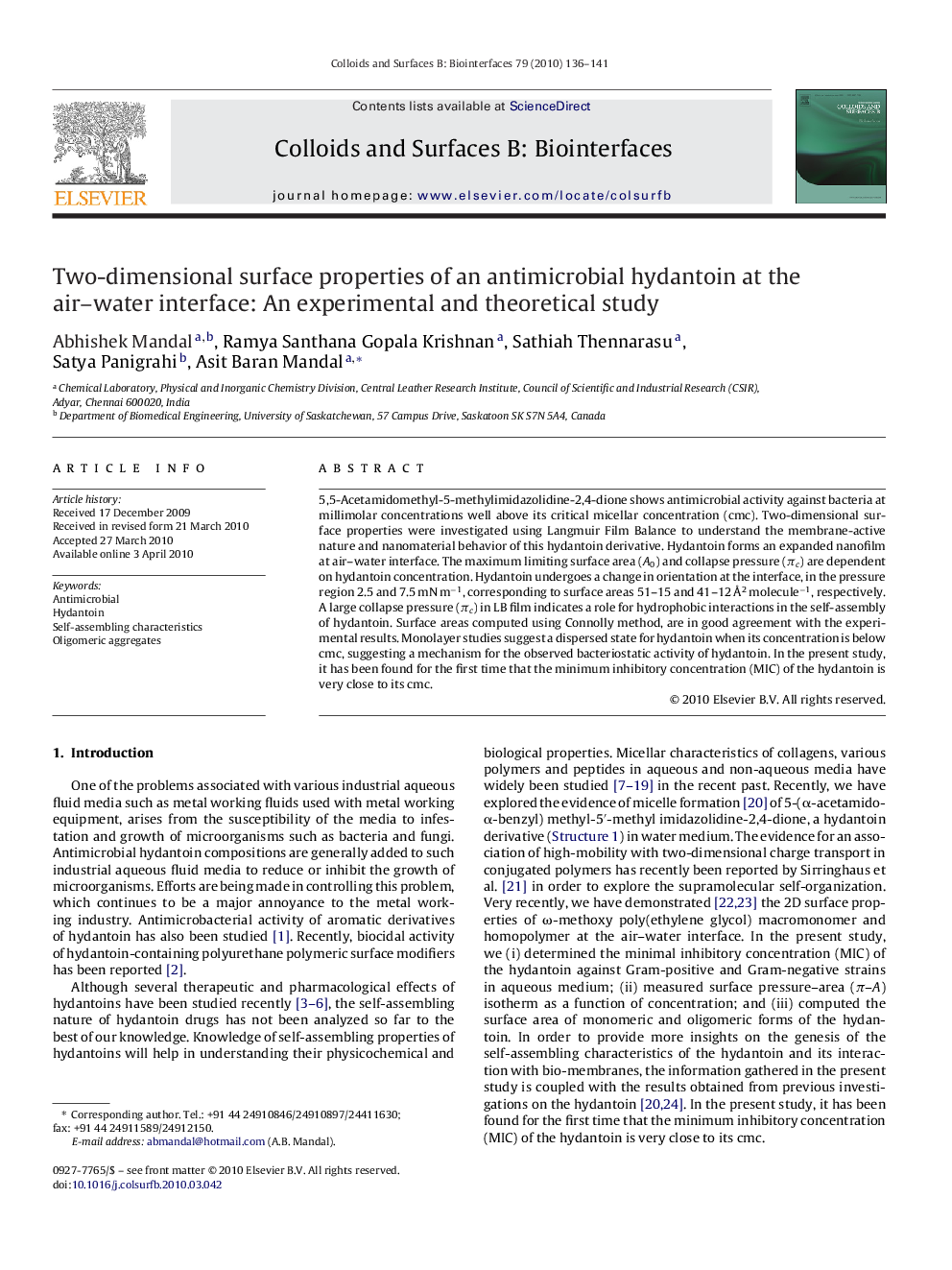| کد مقاله | کد نشریه | سال انتشار | مقاله انگلیسی | نسخه تمام متن |
|---|---|---|---|---|
| 601548 | 879947 | 2010 | 6 صفحه PDF | دانلود رایگان |

5,5-Acetamidomethyl-5-methylimidazolidine-2,4-dione shows antimicrobial activity against bacteria at millimolar concentrations well above its critical micellar concentration (cmc). Two-dimensional surface properties were investigated using Langmuir Film Balance to understand the membrane-active nature and nanomaterial behavior of this hydantoin derivative. Hydantoin forms an expanded nanofilm at air–water interface. The maximum limiting surface area (A0) and collapse pressure (πc) are dependent on hydantoin concentration. Hydantoin undergoes a change in orientation at the interface, in the pressure region 2.5 and 7.5 mN m−1, corresponding to surface areas 51–15 and 41–12 Å2 molecule−1, respectively. A large collapse pressure (πc) in LB film indicates a role for hydrophobic interactions in the self-assembly of hydantoin. Surface areas computed using Connolly method, are in good agreement with the experimental results. Monolayer studies suggest a dispersed state for hydantoin when its concentration is below cmc, suggesting a mechanism for the observed bacteriostatic activity of hydantoin. In the present study, it has been found for the first time that the minimum inhibitory concentration (MIC) of the hydantoin is very close to its cmc.
Journal: Colloids and Surfaces B: Biointerfaces - Volume 79, Issue 1, 1 August 2010, Pages 136–141